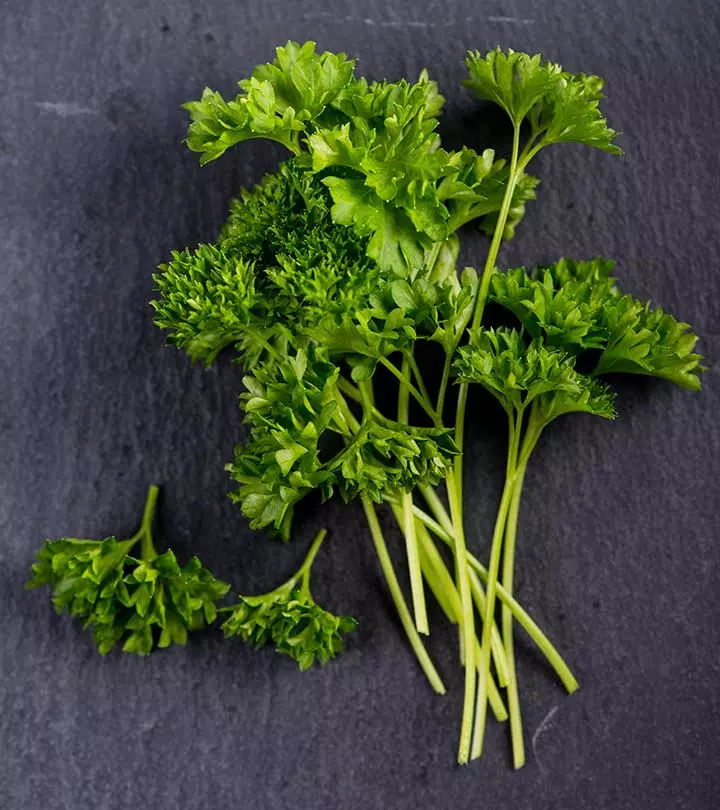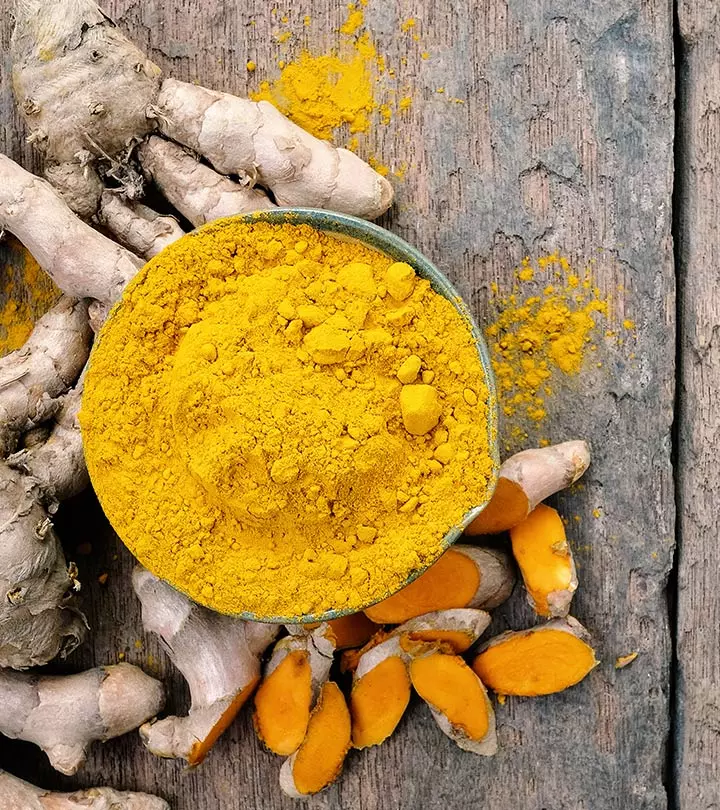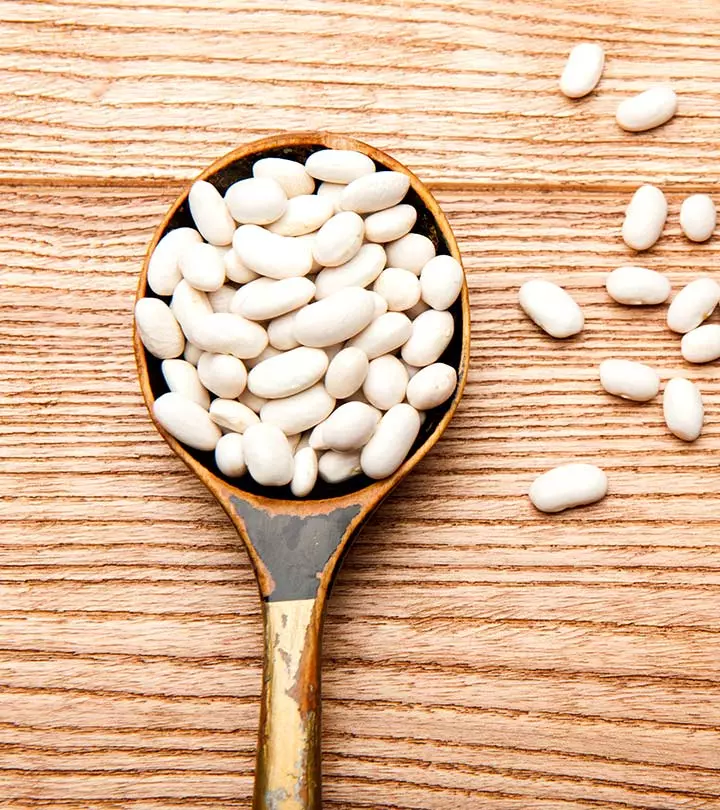Exploring The Health Benefits Of Mead
There is more good to this scrumptious liquor than we give it credit for!

Image: Shutterstock
The benefits of mead are thought to come from its honey content. This alcoholic beverage is a traditional drink, also called honey wine, and is usually consumed for its sweet taste. But is mead really beneficial? Does the honey it contains offer any effective benefit? Here, we further understand what science says about mead, how to make it, and its potential health benefits and side effects. Read on.
 Know Your Ingredient: Mead
Know Your Ingredient: MeadWhat Is It?
An amber-colored traditional alcoholic beverage made from fermented diluted honey.
What Are Its Benefits?
It may ease upper respiratory tract infections, manage gastrointestinal issues, and reduce inflammation.
Who Can Consume It?
Anyone experiencing cough and cold and digestive issues may consume this beverage in moderation.
How Often?
You can consume it regularly.
Caution
Excessive mead consumption may cause diarrhea, elevate diabetic complications, and affect liver health.
In This Article
What Is Mead?

Mead is a traditional alcoholic beverage with an alcoholic percentage ranging from 8% and 18%. It is generally prepared by the alcoholic fermentation of diluted honey by using yeast. It is popular in Eastern Europe, and is also widely consumed in England, Germany, Ethiopia, and South Africa.
Mead is believed to be the oldest consumed alcohol by humans, even before wine. In many places, mead is still homemade and is especially believed to have many therapeutic properties. Read to know more about the history of mead.
 Trivia
TriviaKey Takeaways
- Mead is a popular alcoholic beverage with an alcoholic content ranging between 8% and 18%. It is typically made by the alcoholic fermentation of diluted honey with yeast.
- Mead may offer anti-inflammatory benefits, help manage upper respiratory tract infections, and help treat gastrointestinal issues.
- To make honey mead at home, all you need is 2 liters of water, 500 grams of honey, 5 grams of mead yeast, 2 large containers with airlocks, and 100 grams of raisins.
- However, excessive mead consumption can result in side effects such as diarrhea, diabetes complications, and a deterioration of liver health.
History Of Mead
Mead is believed to have a history of over 8000 years. It is said to have been created on the Island of Crete. Some also claim that it was first founded in China around the 7th millennium BCE. Mead was also mentioned in the Sanskrit Rig-Veda.
Mead is thought to have been invented accidentally when honey and water were mixed. Today, mead is found in many ancient cultures of different countries. It is available in different types, and we will explore them below.
 Trivia
TriviaTypes Of Mead
- Show Mead: It is the simplest form of mead that contains honey, water, and yeast. It is a basic mead variety without any add-ons.
- Melomel Mead: This mead contains fruits such as raspberries, blackberries, or strawberries in addition to honey, water, and yeast. It is also used as a food preservative.
- Sparkling Mead: It is a carbonated mead variety with some extra honey added. This extra honey is added before bottling the mead.
- Pyment Mead: This mead contains grapes or grape juice. Its alcohol percentage also varies slightly.
- Cyser Mead: This mead is generally fermented with apple juice instead of water. It tastes slightly sweeter because of the apple juice. It is among the most commonly manufactured and consumed mead varieties.
Continue reading to know more about the health benefits of mead.
Does Drinking Mead Offer Any Health Benefits?
We all are aware of how honey benefits our health. Since mead contains honey, it does offer some of its benefits, like its healing properties and overall wellness effects. Let’s take a look at the health advantages of mead.
1. May Offer Anti-Inflammatory Benefits

Inflammation is the body’s basic response to external stimuli. This process helps the body get rid of any external pathogens. The results of such a reaction may include redness, itching, and pain. Honey has anti-inflammatory properties that effectively inhibit the cells that cause inflammation (1).
2. May Help Manage Upper Respiratory Tract Infections
Honey is believed to ease respiratory tract infections. It is the most common home remedy used to treat cough and cold. Research suggests that honey can effectively manage upper respiratory tract infections (2). Its antimicrobial properties may also have a role to play in this regard.
3. May Help Manage Gastrointestinal Diseases

Studies state that honey may help manage gastrointestinal issues like gastritisi A group of conditions that causes redness, pain, inflammation, indigestion, and swelling of the stomach lining. , duodenitisi An inflammation of the duodenum (the first part of the small intestine) that leads to a sore and upset stomach. , and gastric ulceration (3). The pathogens that cause these diseases adhere to the intestinal epithelium. Honey can effectively stop this adherence and may prevent disease.
Further research also states that honey can keep bacteria from adhering to the intestinal epithelial cells (4).
4. May Offer Antioxidant Benefits
Mead is made from honey, which is rich in antioxidants like polyphenols and flavonoids(5). These antioxidants help fight free radicals to protect the body from oxidative stress, which can damage cells and increase the risk of chronic diseases like heart disease and cancer (6). However, it is important to remember that mead is an alcoholic beverage and excessive alcohol consumption can have negative health effects.
These are the few important benefits of mead. While you can purchase it from a local store, preparing it at home is always better. We tell you how in the next section.
How To Make Honey Mead At Home?
What You Need
- 2 liters of water
- 500 grams of honey
- 5 grams of mead yeast
- 2 large containers with airlocks
- 100 grams of raisins
Method
- Slightly warm the water and add honey to it.
- Mix thoroughly in the container for uniformity.
- Add mead yeast and the raisins in the honey-water mixture.
- Fit the airlock to the container without any gap.
- The yeast will turn the sugar into CO2 and alcohol. The airlock ensures no external contaminants enter.
- This first fermentation may take 2 weeks to a month. This process is dependent on the temperature, quality of yeast, and recipe.
- You can see tiny bubbles in the recipe. You can consider the first fermentation finished when the bubbling stops.
- Transfer this mixture into the second container, leaving the sediment behind.
- Seal the airlock and store it in a clean, dark place for 2 months.
- Bottle the recipe and label it after 2 months.
Note: You can easily customize this recipe to prepare different types of meads. For instance, if you wish to prepare Melomel, add mashed or chopped fruits in the third step. Similarly, for Cyser, replace water in the recipe with apple juice.
Alison, a teacher and blogger tried a locally brewed mead during her visit to Suzdal and loved it. She writes in her blog, “It was such a beautiful drink. I remember a surprising punch of cloves and cinnamon and a really refreshing sweetness (i).” This experience also inspired her to make her own ginger-citrus mead recipe, which she has also shared in the post, stating, “It’s a *small* nod to Suzdal, but I still want to go back and give theirs another swig.” Using apple cider instead of water, the recipe contains honey, raisins, and yeast as well as clementines, ginger, cinnamon, and cloves for a refreshing taste.
Preparing mead is simple and consuming it may offer some benefits. However, excess mead intake may also cause adverse effects.
Risks Of Excess Mead Consumption
1. May Cause Diarrhea

Anecdotal evidence suggests that excessive consumption of mead may cause diarrhea as it contains honey. The sugar content in honey may cause loose stools if consumed in excess.
2. May Cause Diabetes Complications
Research suggests that intake of honey may elevate glycated hemoglobin levels, which may cause diabetes complications (7) Those with diabetes must practice caution while consuming mead
.
3. May Cause Liver Damage

Research states that even moderate alcohol consumption is linked to liver damage. Mead generally contains 12-20 % of alcohol, which can negatively affect liver health (8).
Direct research on mead is lacking. You may consult your doctor for further clarification.
The benefits of mead can be attributed to the honey in it. This honey wine has anti-inflammatory properties. It also helps manage upper respiratory tract infections and combat gastrointestinal issues like gastric ulceration, duodenitisi An inflammation of the duodenum (the first part of the small intestine) that leads to a sore and upset stomach. , and gastritisi A group of conditions that causes redness, pain, inflammation, indigestion, and swelling of the stomach lining. . Mead can also be prepared at home easily with simple ingredients. Although mead consumption is considered safe, having it in excess quantities may trigger diarrhea, aggravate diabetes complications, and cause liver damage because of the alcohol present in it. Therefore, its moderate consumption is advised to reap its benefits.
Frequently Asked Questions
Is mead a probiotic?
Yes. Mead is often considered a probiotic that helps improve gut health and immune system health.
Can you get drunk off mead?
Yes. The ABV (alcohol content by volume) of mead is high, and drinking a few glasses will put you over the limit.
Does mead help you sleep?
Since mead is a sugary alcohol, it may help you sleep. However, it typically causes nighttime disruptions and reduces sleep quality.
Is mead a laxative?
Mead has been considered a diuretic and laxativei A type of medicine or substance that can loosen stools and stimulate bowel movements to help relieve constipation. , making it a good solution for people dealing with digestion issues like constipation.
Is mead an antibiotic?
No. Mead is a fermented honey drink with natural antibacterial and antioxidant properties.
When should I drink mead?
You can have mead after a meal or at the end of the evening.
It is better to avoid drinking it at least 3-4 hours before bed to prevent sleep disruptions.
Illustration: What Is Mead? How To Make It Health Benefits And Risks

Image: Stable Diffusion/StyleCraze Design Team
Learn about the advantages and facts of mead in this informative video. Discover the unique history and flavor of this ancient beverage from the video below.
Personal Experience: Source
StyleCraze's articles are interwoven with authentic personal narratives that provide depth and resonance to our content. Below are the sources of the personal accounts referenced in this article.
i. A memory and a recipe: homemade ginger-citrus meadhttps://thisisedible.wordpress.com/2014/05/13/a-memory-and-a-recipe-homemade-ginger-citrus-mead/
References
Articles on StyleCraze are backed by verified information from peer-reviewed and academic research papers, reputed organizations, research institutions, and medical associations to ensure accuracy and relevance. Read our editorial policy to learn more.
- Honey as a Potential Natural Antioxidant Medicine: An Insight into Its Molecular Mechanisms of Action
https://www.ncbi.nlm.nih.gov/labs/pmc/articles/PMC5822819/ - Effectiveness of honey for symptomatic relief in upper respiratory tract infections: a systematic review and meta-analysis
https://pubmed.ncbi.nlm.nih.gov/32817011/ - Traditional and Modern Uses of Natural Honey in Human Diseases: A Review
https://www.ncbi.nlm.nih.gov/labs/pmc/articles/PMC3758027/ - Inhibition effect of honey on the adherence of Salmonella to intestinal epithelial cells in vitro
https://pubmed.ncbi.nlm.nih.gov/16099316/ - Honey and its phenolic compounds as an effective natural medicine for cardiovascular diseases in humans?
https://pmc.ncbi.nlm.nih.gov/articles/PMC7070389/ - Free radicals, antioxidants in disease and health
https://pmc.ncbi.nlm.nih.gov/articles/PMC3614697/ - Effects of natural honey consumption in diabetic patients: an 8-week randomized clinical trial
https://pubmed.ncbi.nlm.nih.gov/19817641/ - Alcoholic Liver Disease
https://www.ncbi.nlm.nih.gov/books/NBK546632/#:~:text=Daily%20consumption%20of%2030%20to
Read full bio of Dr. Somi Igbene
Read full bio of Aparna Mallampalli
Read full bio of Ravi Teja Tadimalla
Read full bio of Sindhu Koganti


























Community Experiences
Join the conversation and become a part of our empowering community! Share your stories, experiences, and insights to connect with other beauty, lifestyle, and health enthusiasts.